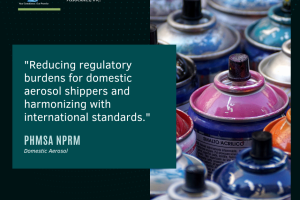Do you have the right training to transport your hazardous materials or dangerous goods?

The transportation of hazardous materials is a risky undertaking which cannot be carried out by untrained personnel. For this reason, all company employees who are tasked with the handling, packaging, transportation, and stowage of hazardous materials must undergo mandatory training. According to the DOT, new employees must undergo function-specific training before they are able take on the responsibilities of their new roles. While existing employees must be retrained every three years to remain compliant. It is important to keep up with these training for the purpose of safety, as well as for the purpose of passing a compliance audit.
Rail Transportation
Transportation of hazardous materials in the US via railway is often regarded as the safest way of moving large volumes of chemicals over long distances. Statistics indicate the safety performance of the railway industry is improving and that the majority of materials arrive without incident. However, that does not lessen the risks involved when handling or transporting hazardous materials. The DOT requires all employees who handle or facilitate shipment of hazmats to undergo training. Hazmat training for rail employees covers general operating requirements, segregation of hazardous materials, placarding requirements, car positioning, packaging, unloading, and storage of hazardous materials. Training is not limited to employees who only do the groundwork, but employees in managerial or supervisory roles as well.
Air Transportation
The majority of air carriers do not accept hazardous materials or goods that are packaged and loaded without compliance to the International Air Transport Association Dangerous Goods Regulations (IATA DGR). Specifically, IATA DGR Section 1.5 requires all hazmat employees to undergo training to familiarize themselves with IATA regulations every 24 months. Unless you have fulfilled the required training, you should not even attempt to package or handle hazardous materials for air transport. Training covers the steps needed for air shipment and uses the IATA Dangerous Goods List to provide general familiarization of the provisions and detailed training related to the specific functions of an individual. Safety training presents the hazards, safe handling, and emergency response procedures associated with dangerous goods.
Road Transportation
The US DOT requires training for hazmat employees, supervisors, and managers within a company. New employees are required to undergo hazmat training within 90 days of hire. Retraining for existing employees is mandatory and should be done every 3 years, or when regulations or roles of the employee’s job change. Violations of hazmat training carry a maximum civil penalty of up to $75,000 for a willful violation and $175,000 for a serious violation that results in personal injury, death, or destruction of property.
The training covers many aspects of routine tasks and risk control measures. During hazmat training, employees will learn what products or items constitute DOT hazardous materials and how to classify them. They will also learn the essentials of packaging, marking, labelling materials, and preparing shipping papers based on the 49CFR Hazardous Materials Table. Employees will cover the procedures for DOT bulk and DOT non bulk ground transportation. Common special issues, as well as administrative issues, are equally covered in training.
Ship/Vessel Transportation
Hazmat employees are required by the DOT and IMO mandate to undergo function-specific training. Employees who handle or supervise shipments are required by IMDG Code to have a solid understanding of rules that govern their jobs, this is learned in the IMDG training. The training looks at what materials constitute IMDG hazardous materials and classifies them under IMDG code. Hazmat employees are also taught how to use the dangerous good list, IMDG packing instructions, and how to meet general packaging requirements. Training also covers rules for limited quantities, preparing hazmat packages for shipment, multimodal dangerous goods form, and marking CTU requirements. During training, employees learn the art of consolidation, segregation, loading, and unloading. While undergoing training, employees also learn how to recognize and respond to security threats.
US businesses who ship hazmat by vessel must comply with the International Maritime Dangerous Good Code and DOT 49 CFR. IMDG Code Section 1.3 requires employee training every three years. DOT strictly enforces both domestic and international rules. Any violations of the IMDG Code, including non-training employees, can attract a significant civil penalty.
Transportation Compliance Associates, Inc. knows how important it is for companies to remain compliant. Let Transportation Compliance help you avoid civil penalties and make safety a priority. Take the worry out of hazmat transportation with Transportation Compliance Associates, Inc. Call 412-249-1111 and schedule your first training session today!





